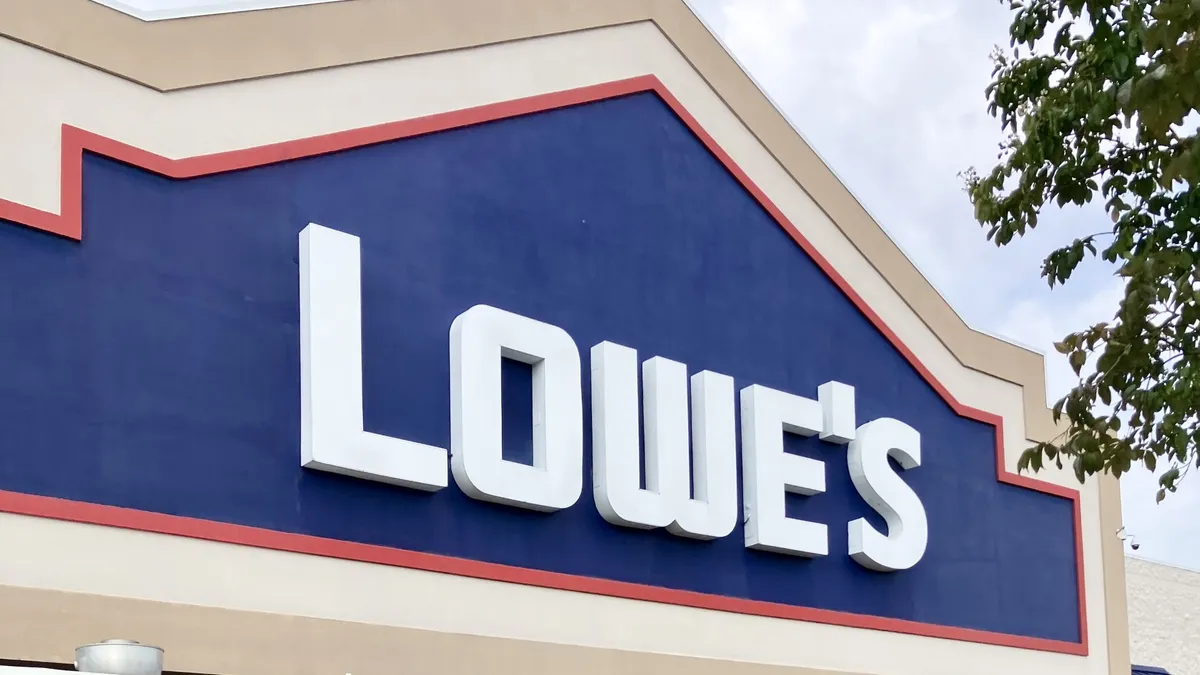After initiating a turnaround plan that entailed shuttering some 100 stores nationwide, bringing up a well-prepared insider to take over as chief executive, investing in avant-garde retail ideas and store concepts and joining the off-price party, Macy's delivered bad news last week: Holiday 2018 was pretty much a bust.
The department store's November/December comparable sales on an owned plus licensed basis rose 1.1% (owned merchandise rose 0.7%) and e-commerce grew in double digits, but the real problem was that it couldn't sustain momentum after strong Black Friday sales. Investors have punished the retailer for its failure to partake of a Christmas week that buoyed many others, propped up by strength in the economy and consumer confidence.
Worse, the bad news isn't likely over, according to GlobalData Retail Managing Director Neil Saunders, who said the holiday report suggests negative comps for the quarter. "The weak holiday performance now raises a big question mark over Macy's recovery strategy," he wrote in comments emailed to Retail Dive, adding that, while the turnaround "had been gaining traction ... it has been let down by Macy's inability to get the basics of retail right across all parts of its business."
The model
Macy's wasn't the only retailer that saw traffic fizzle in the holiday months; Nordstrom also reported lackluster crowds at its full-line stores, especially compared to its off-price Rack unit. What that means to some analysts is that the department store model itself — Americans' most prized shopping destination for much of the 20th century — may be over.
Department stores have the "dubious distinction of being the weakest-performing sector in US retail the past three years," according to a Moody's Investors Services report this week, which also found that "better capitalized companies have slowly been gaining ground thanks to positive sales." Moody's also said that the segment has shrunk dramatically, contracting 13% in 2018 and further this year.
"The landscape for the iconic department store has been on the downswing for decades now," Jaime Ward, who leads the Retail Finance Group at Citizens Bank, told Retail Dive in an interview. "Macy's has resorted to the tactics of giving you a price tag with the MSRP and selling at 40% to 50% below that — that's dramatically different than how Macy's operated 20 years ago. I think that Macy's is doing the best they can given the circumstances. They're fighting the good fight. In the long run, though, it doesn't feel like that's the shopping experience that people want."
It's not only that Macy's is operating in an obsolete retail sector, but also that it drastically expanded years ago just as the model first began to fade, according to retail analyst Nick Egelanian, president of retail development consultants SiteWorks. As he sees it, department stores over the last few decades have ceded several of their "departments" — electronics, appliances, toys and auto services, and, more recently, home goods, furniture, mattresses and cosmetics — to specialty players. As those emptied, Macy's filled the space with apparel and more apparel, which has seen margins tighten (and which has its own fair share of specialty players these days, too).
"While toys and other things like electronics happened a long time ago — apparel happened in the last 10 years," Egelanian told Retail Dive in an email. "What they could have done three decades ago is perhaps change their business model, but they didn't — and neither did Sears and neither did J.C. Penney. But even if they did — they had maybe a 50/50 chance of building a better mousetrap."
The map
Another consequence of Macy's early 21st century expansion (when as Federated it gobbled up St. Louis-based The May Company, which itself had been amassing a series of department stores and retail chains throughout the West and Midwest), is that its fortunes are now a tale of two retailers, according to Egelanian.
"Macy's in the Northeast and in California was a higher-end department store," he said. "There's New York City and Boston and San Francisco, and then you had everything else. And for the 'everything else' part of Macy's, nothing that this guy [CEO Jeff Gennette] is doing is meaningful in a Dayton, Ohio, or a Kansas City, Missouri. The stuff he's doing that's good probably isn't even enough in New York, so it's too little, too late, and not applicable to the whole chain."
Like many analysts, Egelanian and Ward believe the company must close even more stores. "The C and D malls are definitely going to be going away, or at least look markedly different, and Macy's is still anchoring some of those tougher malls," Ward said. "And that's not helping their image and it's certainly a drag on their profitability."
A Macy's spokesperson, however, told Retail Dive that the company doesn't foresee shuttering stores beyond the plans developed nearly three years ago. "In August 2016, we announced we would be closing 100 stores. We are nearly complete with those closures," she said. "We are comfortable with the current store fleet and believe that every store has a role to play in our success." Macy's is in the final stages of closing eight of the original 100 planned stores in the coming months. In an emailed statement the spokesperson also stated, "The decision to close a store is always a difficult one, and regular, non-seasonal employees who we are unable to place at nearby Macy's stores will be eligible for severance, including outplacement resources."
Where Egelanian perceives a troublesome bifurcation in Macy's footprint, Gennette instead sees three types of stores — flagships, magnet stores and neighborhood stores — each with its own customer base and potential.
Gennette counts 11 flagship stores. In a third-quarter conference call with analysts, he called those "some of the best retail properties in America and each of these ... are the #1 retail destination in the regional market. They have the best that Macy's has to offer. It's really an all senses engagement through fashion, service and experience."
The "magnet stores," meanwhile, are those in the company's Growth 50 group, found at better malls where customers are looking for "the best of fashion, food and entertainment," he said, according to a transcript emailed by Macy's to Retail Dive, adding that the concept "will be rolled out to 100 additional stores in 2019." Finally, there are smaller "neighborhood stores," which are all profitable, according to Gennette, and offer convenience, fulfillment of online orders and "basic things like skincare replenishment or casual wear." The company is testing four such stores and this year "will test and iterate until we land on the right formula to scale the neighborhood stores in our fleet."
The magic
But those are all tactics that are being put in place before Macy's has asked itself more fundamental questions, some experts say.
"The crux of it all is, just exactly what does Macy's stand for?" Mark Cohen, director of retail studies at Columbia University's Graduate School of Business, told Retail Dive in an interview. "Once upon a time, many years ago, they were the only game in town in a lot of places — now they are differentiated almost nowhere. They're doing $25 billion worth of business, but as the last man standing they're losing share. The marketplace continues to change in leaps and bounds, and the rate they continue to be left behind is increasing."
Ward sees Macy's trying to be too many things to too many people. "There's a lot of talent at Macy's, but boy they're on the wrong side of the trend, which is specialization," he said "Either you've got to specialize and make it much more efficient and convenient, or offer an exceptional experience, with customer service, say, and they're not doing either of those, really. They're trying to appeal to too many shoppers without being an expert in anything."
"Magic" is a word that Macy's itself has long employed in its marketing, but the magic is gone from the customer experience, according to Russell S. Winer, professor of marketing at New York University's Stern School of Business. Not even the high-touch customer service that department stores years ago were known for — and that rival Nordstrom fiercely protects — is evident, he said. "The flagship store here on 34th Street, frankly I think it's a mess. The workers are not particularly customer focused. They need what we call rebranding, but broader than 'we need a new logo.' Do some research into what are the associations in people's minds, what are the perceptions. 'Who's our target audience?' and 'Can you bring back that magic feeling outside of the holidays?"
The mandate
Macy's has run a department store empire for decades now, but the convenience of e-commerce, which has turned so many undifferentiated goods into commodities, is forcing a reckoning, experts say.
"Macy's didn't have to mean something years ago because Macy's had a reputation. Now most of what Macy's sells can be found elsewhere, often in a nicer place," Cohen said. "Or in front of your computer at home." Yet the retailer owns a bulging, neglected portfolio of private labels, that, with investment, could be differentiators, he also noted. He too believes the retailer should also exit more lower-tier malls.
There are those analysts, including the team at UBS led by Jay Sole, who believe that many of the company's initiatives, including its Backstage off-price effort, Vendor Direct drop-shipping, Store Pickup, Loyalty and Growth50, "are showing promise," according to a note emailed to Retail Dive. While the "surprisingly weak holiday performance suggests big challenges continue, ... a turnaround is still possible."
If so, however, it will take more than those initiatives, according to Cohen. "Macy's is caught between the fantasy and the lack of reality, between Herald Square and Union Square and everything else in the world," he said. "The web and the store have to speak with one voice, and underlying it all, which is the most challenging, they have to answer for themselves and their investors and their customers — 'What is Macy's?'"






















